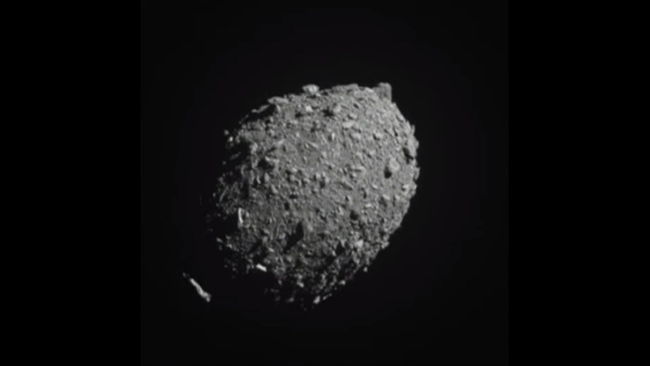NASA’s DART Mission Seriously Impacted Its Asteroid Target
“For the most part, our original pre-impact predictions about how DART would change the way Didymos and its moon move in space were correct.”
Rogue asteroids in other words are a potential hazard to planet Earth. But it seems that there wasn’t a large meteorite impact that could bring an end to the dinosaurs in about the last 65 million years, nevertheless there were some nervy clinches. For instance, a Chelyabinsk asteroid in the year 2013 landed on earth and caused a bright fireball and generated a pressure wave which affected the nearby regions.
In order to counter this threat, space agencies across the globe are starting to plan. In 2022 NASA sent the Double Asteroid Redirection Test (DART) spacecraft, the first-ever mission to test asteroid deflection through impact. DART impacted with Dimorphos, a smaller asteroid that it shares orbit with a larger asteroid known as Didymos – which is a binary asteroid. The identified collision has already produced pertinent information, and present studies show even more. As noted in the paper published this year, DART produced a tremendous sized crater on Dimorphos, and designer the shape and motion of the asteroid.
‘On balance, our pre-impact forecasts of how DART would alter the motion of Didymos and its moon prove to be quite accurate,’ explained Derek C. Richardson, an astronomer at the University of Maryland, who leads DART. Yet there are some surprises that have been obtained that provide a better idea of how asteroids and other small celestial bodies are created and proceed.
One of the things that were realized was how much of an impact DART had on Dimorphos. Earlier, the asteroid was oblate spheroidal, which basically means it was slightly squashed due to rotational forces or gravity, predawn. This collision made the Dimorphos changes to be prolate in shape, that is elongated along the axis and in one particular direction. These distortions could have been caused by shifting of mass within the asteroid, as well as alteration in the asteroid’s rotations.
‘Before the impact, we expected Dimorphos to be prolate because there is a common understanding that moons are formed from an accretion disk, and hence, are elongated,’ Richardson said. >However, this result dismisses such hypothesis and indicates that much more complicated mechanisms occur here; furthermore, the change of shape of Dimorphos might influence its relations with Didymos.
This is in fact true and resulted in the alteration of the dynamics and balance of forces in the binary system by shortening Dimorphos’ orbit as planned.
‘Initially, Dimorphos may have exhibited the kind of orbit where one side is always facing Didymos, similarly to how the moon is always facing Earth,’ added Richardson. “At that time it might be wobbling or even tumbling which indicates that it could be spinning in rather a random fashion.
As the observations made also demonstrated, the size and shape of Didymos did not change during its passage through space, which speaks about its structural soundness. The group is now waiting for more data indicating when the ejected debris will cease to threaten and whether Dimorphos will come to a stop or continue rotating erratically.
But one important issue that has emerged is whether Dimorphos is stable enough to host future missions with an option of landing and extending research instruments, according to Richardson. ‘We will not see the effect in decades but if we can measure how long it takes to stabilise Dimorphos, it will give us very useful data about the interior and help when it comes to dodging future asteroid threats’.
These are important insights especially for the future missions such as the European Space Agencies’ next trip to the Didymos system scheduled for October 2024.
“Some issues of the study of gravitational physics are hard to model in a laboratory, and thus, observing DART has been beneficial for understanding them, as Richardson pointed out. ” “This research assists us in honing our sensitization measures to counter whatever danger that might be posed by the asteroid and comets even though the probability of such a threat is slim, the need to have more shield cannot be overemphasized. ”
The paper was published on Aug. 23 in The Planetary Science Journal.
Do not forget to share your opinion with us to provide you with the best posts !




0 Comments